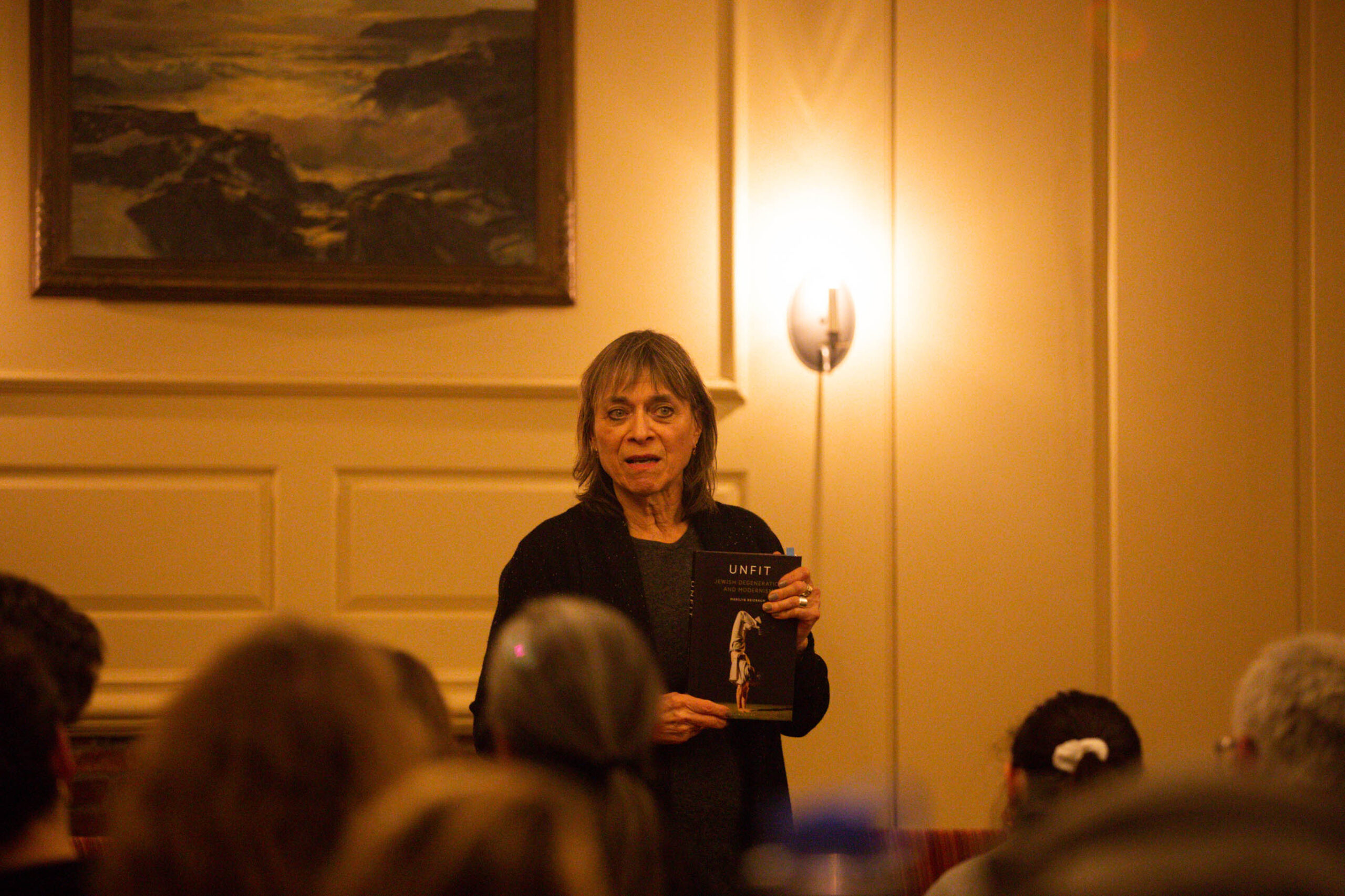Reizbaum explores Judaism in new book
January 31, 2020
 Ann Basu
Ann BasuOn Wednesday evening, Harrison King McCann Professor of English Marylin Reizbaum discussed her latest book—one that took her 10 years to complete.
“Unfit: Jewish Degeneration in Modernism” examines the manifestations of degeneration theory in Jewish artwork. Especially prominent in the early 20th century, but stemming from Darwinist and post-Darwinist thought, degeneration theory seeks to analyze the duality of progression and atavism. Degeneration entertains the idea that, while a subject might initially appear to only symbolize strength and progression, the same subject can contain elements of weakness and regression as well.
“The cluster of ideas associated with degeneration, among them ‘purity,’ ‘fitness’ and ‘good form,’ roughly distribute to matters moral, physical and aesthetic,” Reizbaum writes in the book. “And through their interplay, they all provide an underpinning of modernism which has been insufficiently mapped.”
Reizbaum’s book explores degeneration theory through the lens of Judaism in the creative arts, including writing, film and photography. Reizbaum believes that this underrepresented perspective is valuable.
“There were many Jews involved in writing degeneration theory, and they were often writing the terms of their own disenfranchisement,” said Reizbaum. “Degeneration theory created this hierarchy of what was valuable and what was not, and often, Jews were represented in the arena of what was not, so to have Jews participating in writing that theory was very, very striking to me.”
While fiction writing—specifically, the work of James Joyce—was one of the principal catalysts for Reizbaum’s exploration of degeneration theory, Reizbaum believed that the visual arts were crucial to her analysis of the theory.
“New art forms were emerging in the very same moment that degeneration theories were taking hold, such as the art of photography,” said Reizbaum. “So I felt … I needed to include different genres [of artwork].”
Reizbaum’s choice to analyze visual art produced challenges. She felt it important to learn how to discuss photography and film accurately and effectively.
“Photography—the visual culture—was not mine,” Reizbaum said. “It is something I thought I needed to really learn: to be faithful to doing the best I could.”
The global scope of degeneration theory created another set of challenges for Reizbaum. Her work with German, Italian, Austrian and French theorists meant that she had to navigate both language and cultural barriers when compiling her research. Her exploration of Jewish work forced her to interact with—and navigate the issues caused by—historical antisemitism and oppression.
“In some cases, the work of a particular figure I was interested in had been destroyed,” said Reizbaum. “Because they were Jewish and their work had been burned by the Nazis, it was almost inaccessible. You had to go and sort of track it down.”
Reizbaum’s book features creative minds such as writers James Joyce, Pat Barker, photographer Claude Cahun and filmmaker Mervyn LeRoy. She discusses classics such as Joyce’s “Ulysses” and Bram Stoker’s “Dracula.” Reizbaum hopes that her book will inspire further scholarship and recognition of these artists and pieces.
“If people have a particular interest in those figures, they will find the book helpful in examining their work,” said Reizbaum.
Reizbaum emphasizes that while “Unfit” concentrates on exploring Jewish narratives, the book is anything but limited in its analysis. She hopes that her perspective on degeneration theory will convey the wide-ranging applicability of her research.
“I hope that the work that I have done will help [the Bowdoin community] to see that the focus is not narrow,” said Reizbaum. “There is a wide scope, and that [the Jewish lens] can be a useful way of examining developments in the arts … I hope the community can appreciate that.”

Comments
Before submitting a comment, please review our comment policy. Some key points from the policy: